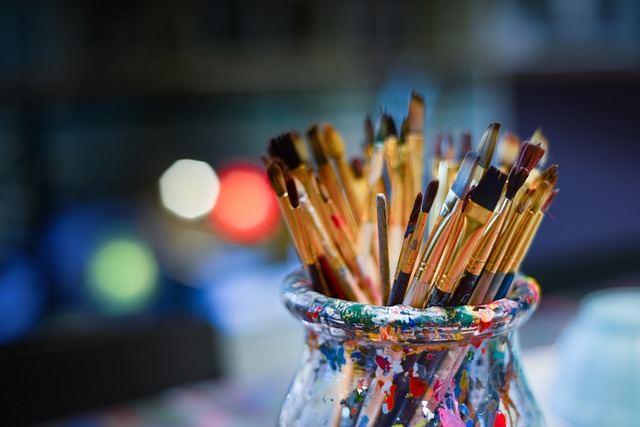DIY Orthodontics: How to Fix Your Retainer Yourself
Are you tired of shelling out hundreds of dollars for minor adjustments to your retainer? Looking for a more cost-effective solution to fix your retainer yourself? Look no further! In this article, we will guide you through the world of DIY orthodontics, providing you with the knowledge and confidence to make those necessary adjustments to your retainer on your own. Bid farewell to expensive orthodontic visits and say hello to a more budget-friendly solution that puts you in control. So, grab your tools and get ready to embark on a journey of self-care and self-reliance as we delve into the realm of DIY orthodontics.
1. Understanding the Importance of Retainers in Orthodontic Treatment
Retainers play a crucial role in orthodontic treatment, ensuring that the teeth remain in their corrected positions after braces are removed. These custom-made devices are designed to hold the teeth in place, preventing them from shifting back to their original positions. Here’s why retainers are so important:
- Maintaining the results: After months or even years of orthodontic treatment, it’s essential to maintain the results achieved. Retainers help to stabilize the teeth in their new positions, allowing the surrounding tissues and bones to adapt to the changes.
- Preventing relapse: Teeth have a natural tendency to shift back to their original positions, especially during the first few months after braces are removed. By wearing retainers as prescribed by your orthodontist, you can prevent any relapse and ensure that your beautiful smile stays intact.
There are different types of retainers available, including removable and fixed options. Removable retainers can be taken out for eating and cleaning, making them more convenient. On the other hand, fixed retainers are bonded to the back of the teeth, providing a more permanent solution. Your orthodontist will recommend the most suitable type based on your individual needs. Regardless of the type, it’s crucial to follow the recommended retainer wear schedule to ensure the long-term success of your orthodontic treatment.

2. Common Issues with Retainers and When to Seek Professional Help
Retainers are an essential part of maintaining a straight and beautiful smile after orthodontic treatment. However, like any dental appliance, they can sometimes encounter issues. It’s important to be aware of these common problems and know when it’s necessary to seek professional help.
Here are some common issues with retainers:
- Loose Fit: If your retainer feels loose or doesn’t fit properly, it may not be doing its job effectively. This could be due to changes in your teeth alignment or wear and tear on the retainer itself. In such cases, it’s crucial to consult your orthodontist to adjust or replace the retainer.
- Discomfort or Irritation: Retainers should not cause significant discomfort or irritation. If you experience pain, soreness, or ulcers, it may indicate a problem. This could be caused by a broken wire, a rough edge, or an ill-fitting retainer. Seeking professional help will ensure that any issues are addressed and resolved promptly.
- Damage or Breakage: Accidents happen, and retainers can be damaged or broken. Whether it’s a cracked plastic plate or a bent wire, damaged retainers may not effectively maintain your teeth alignment. It’s crucial to contact your orthodontist if you notice any damage, as they can assess the extent of the issue and provide necessary repairs or replacements.
When to seek professional help:
- If your retainer becomes significantly loose or doesn’t fit anymore.
- If you experience discomfort, pain, or ulcers while wearing your retainer.
- If your retainer is damaged or broken.
- If you have any concerns or questions regarding your retainer’s effectiveness or maintenance.
Remember, timely professional assistance is essential to ensure the longevity and effectiveness of your retainer. Don’t hesitate to reach out to your orthodontist if you encounter any issues or have any doubts.

3. Step-by-Step Guide: DIY Solutions for Minor Retainer Problems
When it comes to minor retainer problems, there are several DIY solutions that can help you address the issue at home. Here is a step-by-step guide to tackling these problems on your own:
1. Adjusting a Loose Retainer:
- Start by thoroughly cleaning your retainer to remove any bacteria or debris.
- If the retainer feels loose, try gently squeezing the sides together to tighten it. Be careful not to apply too much pressure.
- If the retainer continues to feel loose, you can use orthodontic wax to add a temporary layer of padding, providing a snug fit until you can see your orthodontist.
2. Fixing a Broken Wire:
- If a wire on your retainer breaks or becomes loose, use a clean pair of tweezers to carefully adjust it back into place.
- If the wire is poking or irritating your mouth, you can use orthodontic wax to cover the sharp edge and prevent further discomfort.
- Remember that these DIY solutions are temporary fixes and it is important to schedule an appointment with your orthodontist as soon as possible to address any problems.

4. Tools and Techniques for Adjusting Your Retainer at Home
When it comes to adjusting your retainer at home, there are a few tools and techniques that can help you ensure a proper fit and maintain the effectiveness of your orthodontic treatment. Here are some handy tools and techniques:
1. Dental Wax: Dental wax is a soft and pliable material that can be applied to any areas of your retainer that are causing discomfort or irritation. Simply shape a small piece of wax and place it on the problematic spot to provide a cushioning effect and alleviate any soreness.
2. Retainer Cleaning Tablets: Cleaning your retainer regularly is crucial for maintaining good oral hygiene. Retainer cleaning tablets are designed to remove bacteria and plaque buildup from your retainer. Simply dissolve a tablet in a container of water, place your retainer in the solution, and let it soak for the recommended time. This will help keep your retainer fresh and free from harmful germs.

5. Maintaining Your Retainer: Dos and Don’ts for Long-lasting Results
Maintaining your retainer is crucial for ensuring long-lasting results. Here are some dos and don’ts to follow:
DOs:
- Keep your retainer clean by brushing it with a toothbrush and toothpaste. This will prevent the buildup of bacteria and odors.
- Store your retainer properly when not in use. Always keep it in its case to protect it from damage or loss.
- Wear your retainer as instructed by your orthodontist. Consistency is key in maintaining the alignment of your teeth.
- Regularly visit your orthodontist for check-ups. They can ensure that your retainer is still fitting properly and make any necessary adjustments.
DON’Ts:
- Expose your retainer to high temperatures, as this can cause it to warp or become misshapen.
- Eat sticky or hard foods while wearing your retainer, as this can damage the appliance.
- Forget to clean your retainer regularly. Poor hygiene can lead to oral health issues and affect the effectiveness of your retainer.
- Share your retainer with anyone else. It is designed specifically for your teeth and should not be used by others.
6. When to Stop DIY Orthodontics: Signs It’s Time to Consult an Orthodontist
When it comes to DIY orthodontics, it’s important to know when it’s time to consult an orthodontist. While DIY methods may seem tempting, there are certain signs that indicate it’s time to seek professional help. Here are some key indicators that you should look out for:
1. Pain or Discomfort: If you experience persistent pain or discomfort while attempting to straighten your teeth on your own, it’s a clear indication that you should consult an orthodontist. Pain could be a sign of a more serious issue that requires professional intervention.
2. Unwanted Movement: If you notice that your teeth are moving in a way that you didn’t intend or desire, it’s time to see an orthodontist. DIY methods can sometimes result in teeth shifting in unpredictable ways, which can lead to a misaligned bite or other dental issues.
3. Lack of Progress: If you’ve been diligently following a DIY orthodontic treatment plan but aren’t seeing the desired progress, it’s best to consult an orthodontist. They can evaluate your situation and determine if a different approach or professional treatment is necessary.
4. Damage to Teeth or Gums: DIY methods can inadvertently cause damage to your teeth or gums if not executed correctly. If you experience any signs of damage, such as bleeding gums, loose teeth, or broken dental appliances, it’s crucial to seek professional help immediately.
Remember, while DIY orthodontics may seem like a cost-effective option, it’s essential to prioritize your oral health and seek professional guidance when needed. Orthodontists have the expertise and knowledge to provide personalized treatment plans that will give you the best and safest results for your smile.
7. The Pros and Cons of DIY Orthodontics: Making Informed Decisions
Before deciding to embark on a do-it-yourself (DIY) orthodontic treatment, it is important to be aware of both the advantages and disadvantages. Understanding the pros and cons will help you make an informed decision regarding your oral health.
Pros of DIY Orthodontics:
- Cost-effective: DIY orthodontics can be significantly cheaper than traditional orthodontic treatments, making it a more affordable option for some individuals.
- Convenience: With DIY orthodontics, you have the flexibility to manage your treatment at your own pace and schedule, without frequent visits to an orthodontist.
- Privacy: Some individuals prefer the privacy of DIY orthodontics as it allows them to address their orthodontic concerns discreetly, without others knowing.
Cons of DIY Orthodontics:
- Lack of professional guidance: DIY orthodontic treatments lack the supervision and expertise of a trained orthodontist, which increases the risk of complications and incorrect tooth movements.
- Increased risk of damage: Without proper knowledge and experience, attempting to straighten teeth on your own can lead to irreversible damage to your teeth, gums, and overall oral health.
- Incorrect diagnosis: Without a professional assessment, you may misdiagnose your orthodontic issues, leading to ineffective treatment or exacerbating existing problems.
Frequently Asked Questions
Q: What are DIY orthodontics and why are they gaining popularity?
A: DIY orthodontics refers to the practice of trying to fix orthodontic issues, such as a misaligned retainer, without professional assistance. It has gained popularity due to the ease of access to information, cost-saving opportunities, and the desire for quick fixes.
Q: Is it safe to attempt fixing a retainer on your own?
A: Fixing a retainer yourself can be risky and potentially harmful to your dental health. Orthodontic treatment should always be performed under the supervision of a qualified professional to ensure safety, accuracy, and effectiveness.
Q: Can DIY methods provide long-lasting results?
A: DIY methods for fixing retainers do not guarantee long-lasting results. Without the expertise of an orthodontist, there is a high chance of incorrect adjustments, which can lead to further complications and additional dental expenses in the future.
Q: What are the potential risks associated with DIY orthodontics?
A: The risks of DIY orthodontics include causing irreversible damage to teeth and gums, misalignment of the bite, jaw problems, and even tooth loss. Additionally, attempted self-adjustments can worsen the original issue, resulting in more complex treatment requirements.
Q: Are there any situations where DIY orthodontics may be acceptable?
A: In general, DIY orthodontics should not be considered acceptable. However, in rare cases where immediate professional help is not accessible, temporary measures like applying orthodontic wax to alleviate discomfort can be considered until proper treatment can be sought.
Q: How important is professional supervision when it comes to orthodontic treatment?
A: Professional supervision is crucial for orthodontic treatment. Orthodontists undergo years of specialized training to diagnose and treat various malocclusions effectively. They possess the necessary knowledge, skills, and tools to ensure safe and successful outcomes.
Q: What should someone do if they are experiencing issues with their retainer?
A: If someone is experiencing issues with their retainer, it is best to contact an orthodontist promptly. They will be able to evaluate the problem, provide appropriate solutions, and guide the patient in the correct course of action.
Q: What can individuals do to maintain the longevity of their retainers?
A: To maintain the longevity of retainers, individuals should follow their orthodontist’s instructions carefully. This includes proper cleaning, avoiding foods that may damage the retainer, and scheduling regular check-ups with the orthodontist for necessary adjustments or replacements.
Q: Are there any alternatives to professional orthodontic treatment for retainer issues?
A: When it comes to retainer issues, there are no reliable alternatives to professional orthodontic treatment. Attempting DIY methods or seeking unverified alternatives can lead to complications, unsatisfactory results, and potentially costly corrective procedures in the future.
Q: What is the bottom line on DIY orthodontics for fixing retainers?
A: The bottom line is that DIY orthodontics should be strongly discouraged, especially when it comes to fixing retainers. Orthodontic treatment should always be performed by qualified professionals to ensure safety, effectiveness, and long-term oral health.
In Retrospect
In conclusion, the concept of DIY orthodontics, particularly fixing your retainer yourself, can be tempting for those seeking a cost-effective solution. However, it is essential to approach this topic with caution and awareness. Here are the key takeaways to keep in mind:
1. Professional guidance is crucial: Orthodontic treatment should always be supervised by a qualified orthodontist. DIY methods may seem convenient, but they lack the expertise and personalized care that professionals provide.
2. Risks and complications: Attempting to fix your retainer without proper knowledge can lead to serious oral health problems. Applying excessive force or incorrect adjustments can cause misalignments, pain, or even damage your teeth and gums.
3. Consult your orthodontist: If you experience any issues with your retainer, it is best to consult your orthodontist immediately. They possess the expertise to diagnose and address the problem effectively, ensuring your oral health remains intact.
4. Follow maintenance guidelines: To extend the lifespan of your retainer, it is crucial to follow the maintenance guidelines provided by your orthodontist. Regular cleaning and proper care will prevent unnecessary damage and the need for self-repair.
5. Budget-friendly alternatives: If cost is a concern, discuss financial options with your orthodontist. They may offer installment plans or suggest alternative treatment options that fit your budget without compromising your oral health.
Remember, your oral health is of utmost importance, and DIY orthodontics may not always be the safest or most effective route. Trust the expertise and guidance of professionals to ensure a healthy and beautiful smile.






